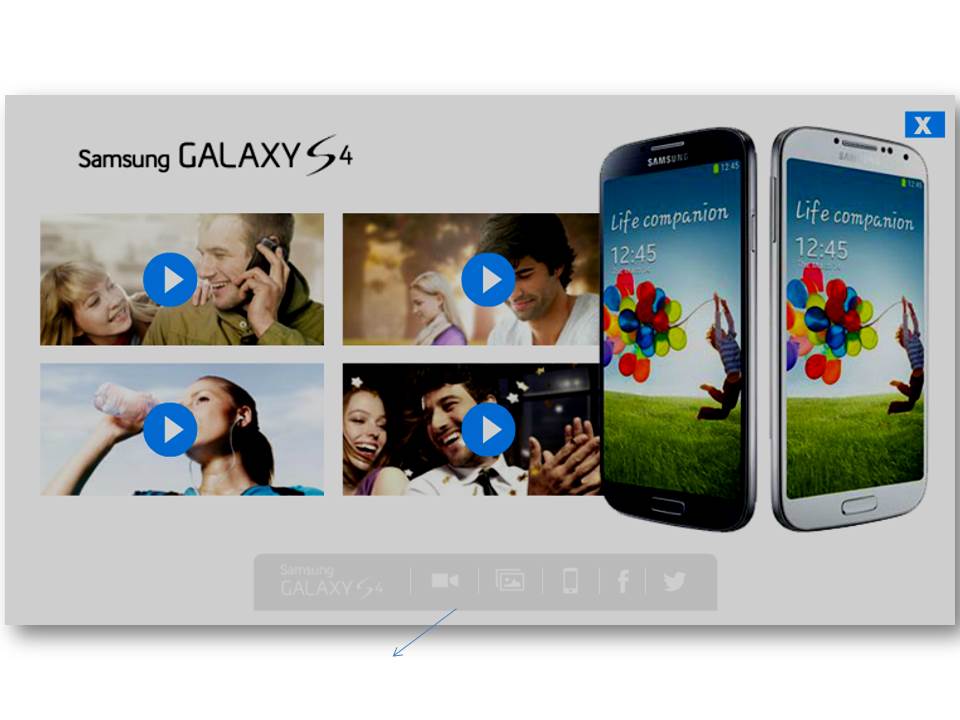Video advertising isn’t a new concept, but the implementation and execution of current video advertising efforts are clumsy and ineffective. The Interactive Advertising Bureau aims to change this, however, with the standardization of five new interactive video ads it introduced into its Rising Stars ad format last February via competition. IAB gathered creative minds from different firms and agencies to develop their own concept of interactive video ads and picked the five best entries. These five video ad formats will spearhead the next generation of video ads.
Interactive Agency : Video ads
The Digital Video Rising Stars ad format is mature video advertising. Where before, video marketing was taking baby steps trying to figure out how it can become more than recycled TV spots, with interactive video ads the marketing channel is becoming solid, unique, and most importantly, effective. Take a look at this Samsung Galaxy S4 demo ad. It isn’t limited by pre-roll video, it doesn’t make an excuse of itself to be seen, and it delivers the most engaging video ad experience yet.
Digital creative agency – Taking Everything That Works
It’s like taking everything that is known to work for online advertising and infusing it into video. In the Samsung Galaxy sample above, a basic video ad is overlaid with controls aside from the play / pause and mute / unmute button. It offers access to more videos, an image gallery, an accessories gallery for the Samsung Galaxy S4, and links to easily share the content to the leading social networks Facebook and Twitter.
The engagement value of the 360 Interactive Video alone is tremendous. Digital creative agency With great visuals it delivers a simple marketing message selling the features of the Samsung Galaxy S4. Beyond that, however, it also:
- Asks permission – video, especially video with sound, that plays on its own and that can’t be controlled is annoying and frustrating. The Samsung ad practices permission-based marketing and even has the sense to mute the video by default.
- Encourages interactivity – the overlaid controls offer a breadth of more content that engages the viewers and allows them to explore the video ad experience further. According to ad agency Brunner Inc., their client Cub Cadet enjoyed a 128% increase in click-throughs by using interactive video ads.
- Promotes social sharing – the inclusion of easy, one-click sharing to Facebook and Twitter is best practice in nearly all channels o marketing. Better yet, social media and video is a great combination.
- Discourages engagement external to the channel – all the extra controls that allow for further engagement, aside from the ones that promote social sharing, all leverage the same channel instead of sending the viewers o a different format like a website. It maximizes the use of the medium of consumption and minimizes viewer confusion.
- Focuses on one marketing message – the video ad is all about the basic physical features of the Galaxy S4. It doesn’t try to take forever to show every facet of the complex device, but it does offer a way for viewers to do so: it offers a link to more videos, an image gallery, and a list of device accessories.
All of these are best practices outside of interactive video ads. Why wouldn’t they work for video marketing?
Navigating the Pitfalls
Obviously, interactive video ads are an exciting development to video as a marketing channel, but they are still a minority of all video ads served on the web today. Over 85% of all video ads are the generic, pre-roll 15-30 second spots that video viewers put up with just so they an watch the video they intend to watch. It’s the remaining 15% or so that is exploring the potential of interactive video ads, and as they explore, they will have to dodge some marketing pitfalls.
We’ve already mentioned two:
- engagement that leads viewers outside the medium of consumption (interactive video), and
- filling video with multiple marketing messages or focuses
These pitfalls are doubly dangerous because they seem to be cloaked in the guise of best practice: maximizing engagement and messages delivered. These are conceptual pitfalls, however, and there are also technical pitfalls to consider, like ensuring that the format of the interactive video ads will be compatible across a wide range of devices and screens, which they will also have to be adaptable and responsive to. This is also why IAB launched five formats at once.
Dodging these pitfalls that spring up as interactive video ads themselves mature into widely-used, highly scalable ads will be the next big step in the evolution of video advertising. From there, a constant vigilance in monitoring and performance and analytics measurement will be key, but until then, early adopters will have to navigate the waters and establish best practices in interactive video ads deployment largely on their own. It isn’t a superlative risk, really, seeing how comparatively weak ROI-wise standard, non-interactive video ads are.




